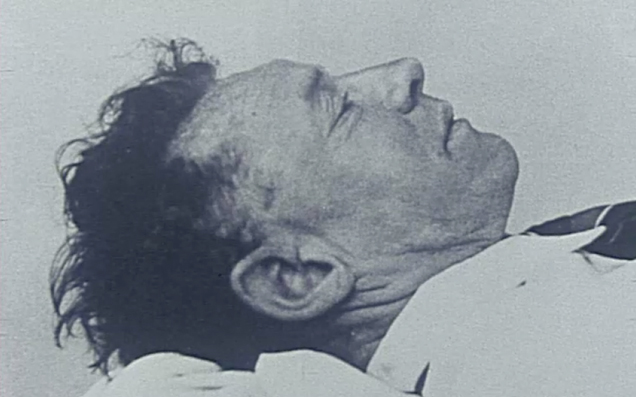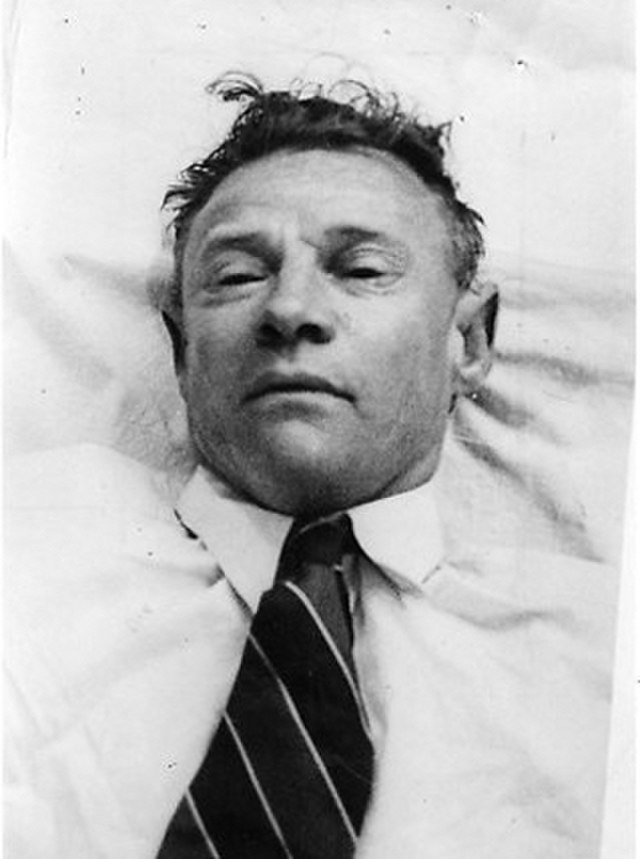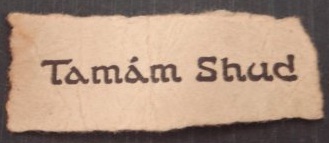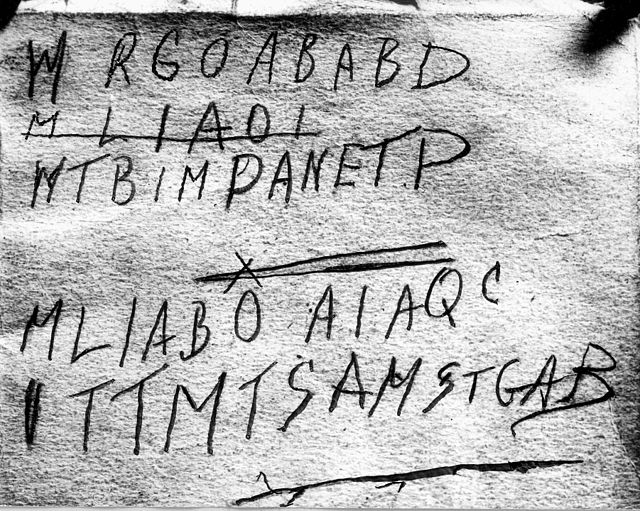
The Tamám Shud case — AKA the disappearance of the Somerton Man — is arguably one of Australia’s greatest true crime mysteries and was solved in July. More photos, details and tidbits about the man’s life in Australia have been unveiled in the time since his identification thanks to newly-linked family members who have come forward.
This week’s episode of Australian Story delves further into the Somerton Man’s life including never-before-seen family photos and a possible explanation for the paper with “tamám shud” — Persian for “it is finished” — which was found in his pocket.
The man of the moment was identified 74 years after his body was found on Adelaide’s Somerton Beach, so here’s everything we know.
Everything We Know About The Somerton Man/Tamám Shud Case
Who is the Somerton Man?
The Somerton Man was identified back in July after his body was exhumed and his DNA was run through genealogy databases.
Adelaide University physicist and Somerton Man expert Professor Derek Abbott succeeded in getting his hands on the Somerton Man’s DNA — and the results will probably be a little disappointing if you’ve gone down the rabbit hole that the unknown man was a Soviet spy.
Abbott and American genealogist Colleen Fitzpatrick announced that they reckon the man was Carl “Charles” Webb, a 43-year-old engineer from Melbourne.
They figured it out by comparing a hair stuck in the plaster bust of his head with samples uploaded by millions of people around the world in online databases of family trees.
The match hasn’t been formally confirmed by South Australian authorities, but since there was a DNA match on both the maternal and paternal sides of Webb’s family, Prof Abbott is pretty sure it’s legit.
“It’s not just that it matched but it actually triangulated, so it connected to a cousin on the father’s side and a cousin on the mother’s side,” he said per The Guardian.
What do we know about the Somerton Man’s family?
Abbott continued piecing together the history of Carl Webb — known as Charles or Charlie — over the months since the Somerton Man mystery was cracked.
Per the ABC, he discovered more about Webb’s history in August.
The mystery man was born on November 16, 1905, in Footscray. He was the youngest of six kids and his older siblings’ names were Russell, Freda, Gladys, Doris and Roy. I wonder if they were Bulldogs fans…
Roy Webb enlisted in the military in 1940 mere years before his death in 1943. He bore a striking resemblance to his youngest brother, who we all know as the Somerton Man.
The one thing that really piqued Abbott’s interest tied back to the Keane link, the name that was found labelled on some of Carl Webb’s items in his suitcase.
Turns out Webb had a brother-in-law named Thomas Keane who lived near him in Melbourne.
Abbott found photos of one John Russell Keane, who is traced back to be Webb’s nephew. He was enlisted in the RAAF and also looked similar to the Somerton Man, and died during the war in Europe. His possessions were sent home to his parents Gerald and Freda Keane — Webb’s older sister and brother-in-law.
So it’s possible that Carl Webb was actually wearing his nephew’s returned clothes when he was found on Somerton Beach.
“They were both roughly the same size … it seems that John Keane was just three-quarters of an inch shorter than Charles Webb, so they would fit each other’s clothes,” Abbott told the ABC.
Are there more photos of the Somerton Man?
A November episode of Australian Story uncovered more family photos and details of Webb’s life. The photos — which were found in an old photo album kept by the Webb family — are from the 1920s and show a young Carl Webb with his brother Roy and their grandparents, a larger family photo and a team photo from his teen years playing football.
Per the ABC, Prof. Abbott got in contact with Stuart Webb after DNA led him to believe that Webb was the great-grandson of the Somerton man’s relative, Norman.
“Professor Abbott asked me if I was related to Norman Webb, who’s my grandfather, and that led to a whole series of questions about my heritage and whether there’s any photos or family histories that I can recall,” he said.
Webb wound up finding an old family photo album with the help of his aunt Julie which revealed photos of “Charlie” in his younger years.
Ahead of tonight’s #AustralianStory we reveal the never-before-seen photos of #SomertonMan https://t.co/ximPjpnCwc pic.twitter.com/kWf6aTO9CZ
— AustralianStory (@AustralianStory) November 20, 2022
Feeling very moved: the face of the Somerton Man, a case I’ve been fascinated by ever since a trip to Adelaide. He’s alive, smiling, very much not dead… pic.twitter.com/UB9MXa7ejw
— Tom Holland (@holland_tom) November 20, 2022
What else do we know about Carl “Charlie” Webb’s life?
Prof Abbott uncovered some more details about Webb’s life, including what he did for a crust and how he spent his downtime.
Newspaper articles on the news archive site Trove revealed the Webb family once owned a bakery in Springvale and it’s likely that Carl helped out until he eventually moved out of the family home.
“Something we do know about the Somerton Man from his autopsy is apparently he did have some scars on his left arm that did look like burns or something, so maybe that is a sign he did so some baking,” Abbott said.
It’s also been found that the Somerton Man played community footy and copped a couple of injuries from his time kicking around the Sherrin. He was also apparently a keen bridge player, which lines up with his divorce papers where his ex-wife Dorothy Robertson noted he was “into playing cards”.
The Australian Story episode delves further into the divorce papers from Robertson. She said Charles was a man with “no particular friends of his own”, was violent, threatening and moody and would write poems based around death.
“He has written many poems, most of them on the subject of death, which he claims to be his greatest desire,” Robertson wrote.
This likely explains a scrap of paper found in Webb’s clothing containing the words “tamám shud”, considering it’s an excerpt from a Persian poem about death.
Apparently, Robertson once came home to find Webb had taken an excessive amount of phenobarbital tablets — an anti-seizure medication also used to treat insomnia and anxiety. He made a recovery from the incident and became violent toward his wife again.
“But as soon as he was about again, he told me that I was a fool to help him get better,” she wrote.
“From then on, he became more violent.”
Robertson left their South Yarra flat in late 1946 after many years of physical and verbal abuse. Webb moved out the following year and headed west to Adelaide.
A post-mortem exam done on Webb’s body in 1949 found that death was caused by heart failure due to poisoning, leading experts to believe he died by suicide all those years ago.
So, what of all the freaky clues?
So why Adelaide? It seemed Robertson had also moved to SA after their divorce.
“In 1947 guess where she went? She went to South Australia,” Abbott said.
“So you might think, ‘well, this guy is somebody who sort-of seems to be a bit of a loner [from] Victoria. What’s he doing in South Australia?’
“It’s speculation, of course, but you know, you can join the dots and say, well, maybe he’s there to go and see her.”
Abbott also joked a few years ago that the code in the book was just the first letters of racehorse names. Well, what do ya know — turns out Webb had a fondness for horse racing. Obvs there’s no way to know if that’s what the scrawl in his book actually meant but it’s probably more likely than secret Soviet communications.
When was the Somerton Man’s body found?
The Somerton Man was found on December 1, 1948 on Somerton Beach in Adelaide. He was clean-shaven and appeared to be a white man about 40 years old.
What was the Somerton Man’s cause of death?
A coroner who inspected his body found that he’d died of internal bleeding and an enlarged spleen. It was ruled that he did not die of natural causes.
There’s a popular understanding that he died by poison. However, there were no traces of poison found in his body or any other symptoms that indicated he had been vomiting, convulsing or had diarrhoea, which are generally dead (sorry) giveaways.

What was the Somerton Man’s body found with?
The Somerton Man was clothed in a dry, neatly pressed brown suit and all the tags of his clothes had been removed. He had no belongings or identification with him. In his lapel was a half-smoked cigarette, and according to some reports, his legs were crossed. They also found bus and railway tickets in his pockets, but no wallet. Essentially, he looked like he was just chilling at the beach — except he was dead.
The man’s fingerprints weren’t in any database and no one came forward to identify him.
A month after the body was discovered, a suitcase was found in the local train station’s cloakroom. It contained clothes with the labels removed and wax thread which was not sold in Australia at the time. It’s believed the suitcase belonged to the Somerton Man, especially because it was lodged at the station the day before his body was found.
Among the items in the suitcase, some were labelled with “Keane” and “Kean”.
Now, this is where things get weird…
Four months after the body was found, in April 1949, authorities found a secret pocket sewn into the man’s pants. Inside the pocket, a tightly rolled scrap of paper with the phrase “tamám shud” was found. Turns out it’s Persian and roughly translates to “it is finished” or “it is ended”. This whole mystery is now called the Tamám Shud case because of it.

The paper was actually traced back to a specific copy of a poem, the Rubáiyát of Omar Khayyám, and the book contained a weird assortment of hand-written letters believed to be a secret code, as well as the phone number of a young nurse named Jessica Thomson who lived near Somerton Beach. Thomson denied ever knowing the man.

FYI, no one has ever cracked the code and the Australian Navy believed it was more likely to just be the initials of a poem.
What are the theories about the Tamám Shud mystery?
So, there are several theories about the Somerton Man’s death. The most believable is that he died by suicide. The Rubáiyát is all about mortality, so there are theories the scrap paper hidden in the man’s pocket that read “Tamám Shud” was a suicide note.
The other theory is that the man was killed by Russian spies. Farfetched perhaps, but his death was at the dawn of the Cold War so there was a lot of paranoia around the Soviet Union. Which maybe isn’t that wild because there actually was a spy ring uncovered in Canberra which operated between 1945 and 1948.
Since no one could identify the man — and the fact that he had no belongings or ID and was well-dressed and clean-shaven — it was a popular theory. And that’s without the freaky book of poems and codes.
In 2013, Kate Thomson — the daughter of Jessica Thompson, the nurse whose number was in the Somerton Man’s book — told 60 Minutes her mother had lied about not recognising the body.
“She said to me she knew who he was, but she wasn’t going to let that out of the bag, so to speak,” she said.
“There’s always that fear that I’ve thought that maybe she was responsible for his death.”
Fighting words, honestly. Her own mother! You could not waterboard this information out of me. It’s called loyalty, sweetie.
The 60 Minutes episode was pretty wild — it revealed claims the Somerton Man and Jessica Thomson were Soviet spies who were also having an affair. The family of Jessica’s son Robin also claimed they now believe he was actually fathered by the Somerton Man.
Help is available.
If you require immediate assistance, please call 000.
If you need mental health support, please call Lifeline on 13 11 14 or chat online.
Under 25? You can reach Kids Helpline at 1800 55 1800 or chat online.
You can also reach the Suicide Call Back Service on 1300 659 467 or chat online.
If you’d like to speak to someone about domestic violence, please call the 1800 Respect hotline on 1800 737 732 or chat online.



